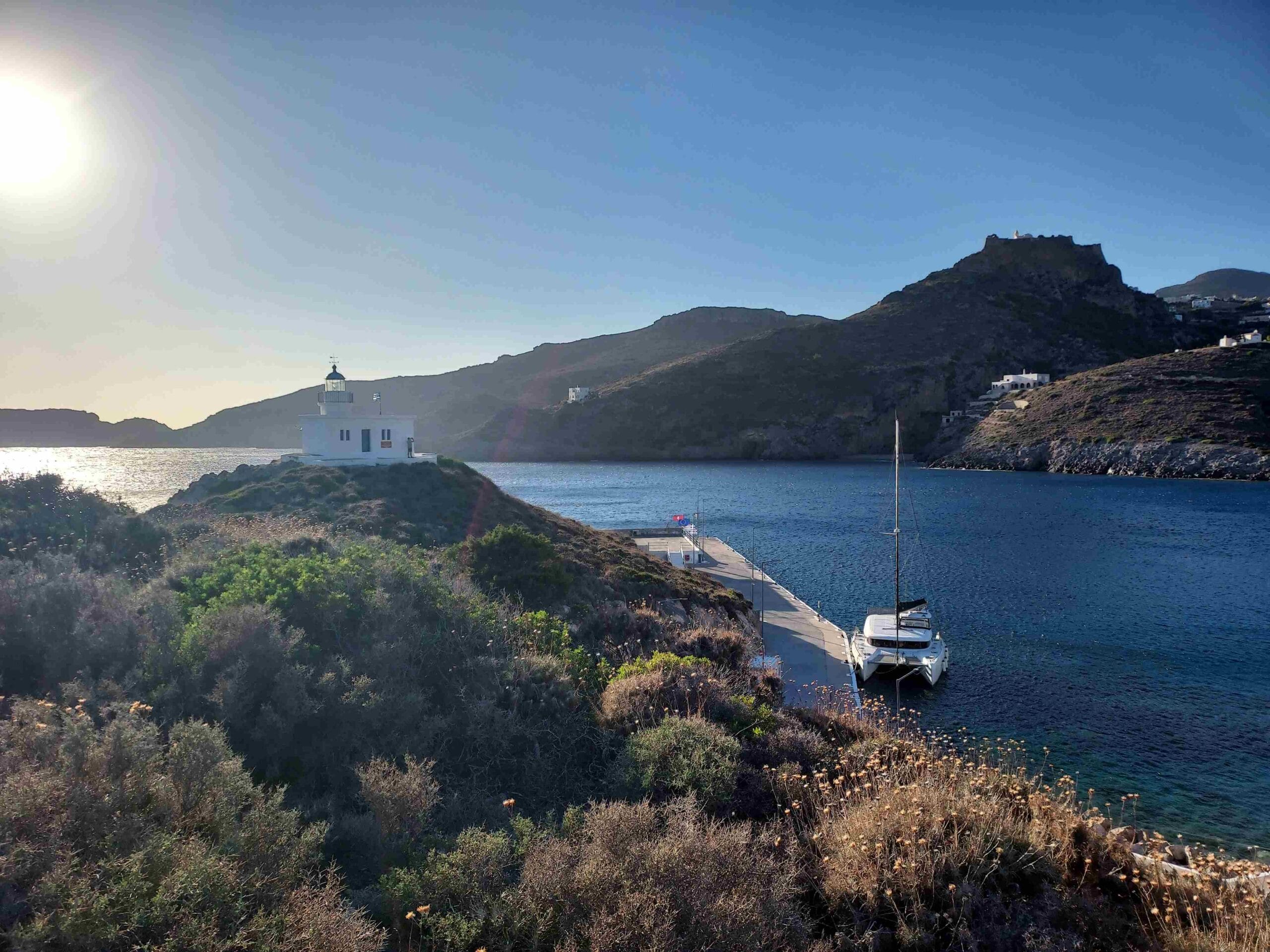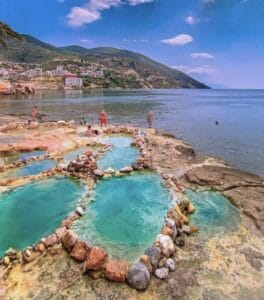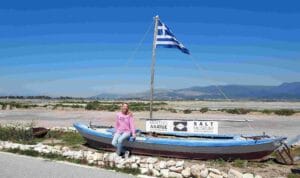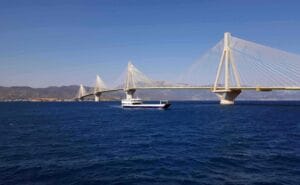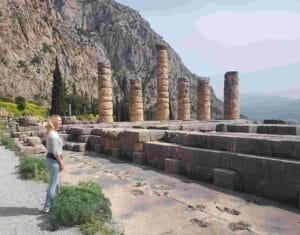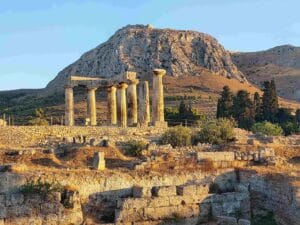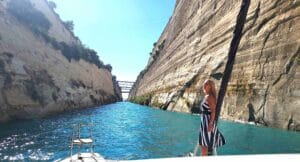From the southern Peloponnese, we wanted to cross over to Crete. That’s a 70-mile journey, and with an average sailing speed of 5 miles per hour, it’s just not convenient to do it in two legs at this time of year. There aren’t 14 hours of daylight, and we prefer to depart and arrive in daylight. Fortunately, the island of Kythira lies in between, allowing us to sail 30 miles first and then another 40 miles. We were waiting for the northeastern wind to arrive and push us nicely southward toward the island.
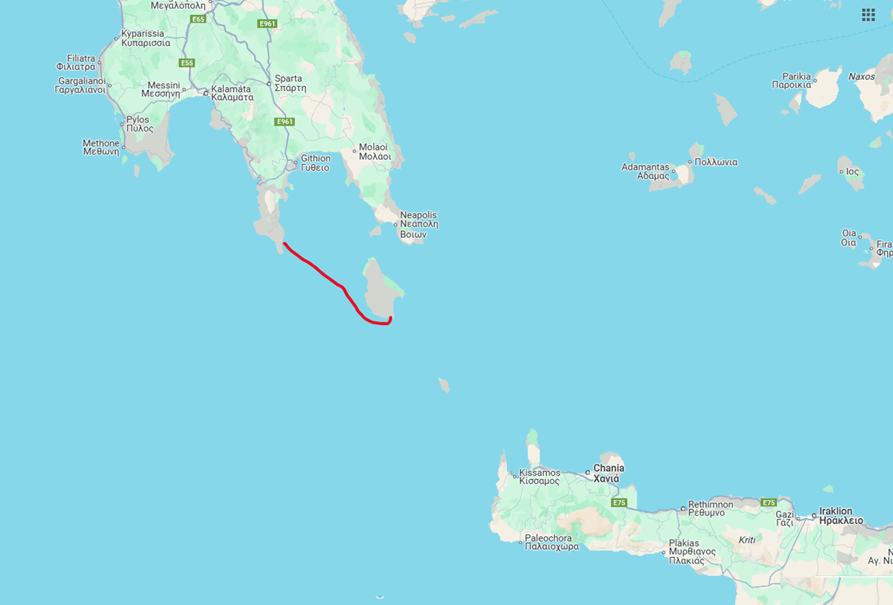
Meltemi Wind: Beware!
The forecast was also sunny weather, so we set off on our six-hour sailing trip at 9:00 AM, aiming to arrive in the bay south of Kythira by 3:00 PM. This bay would provide good shelter from the northeastern wind.
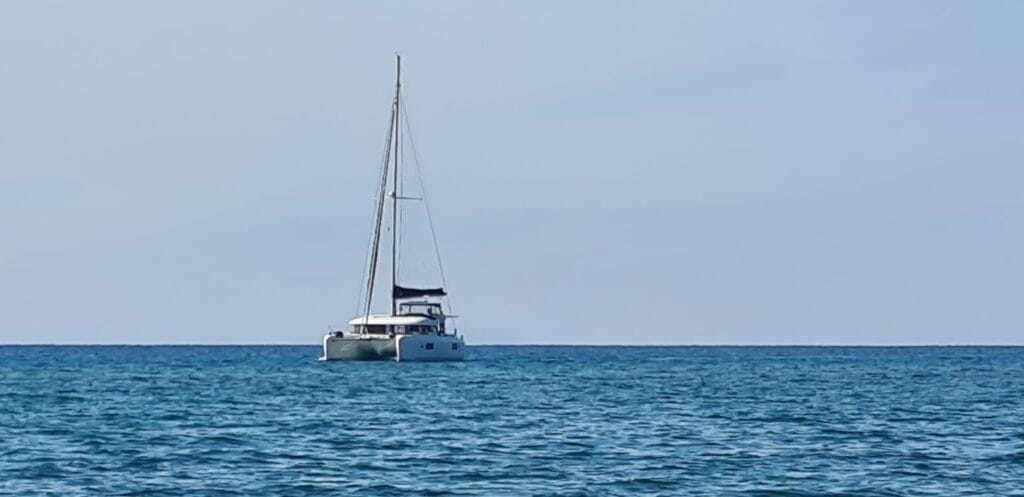
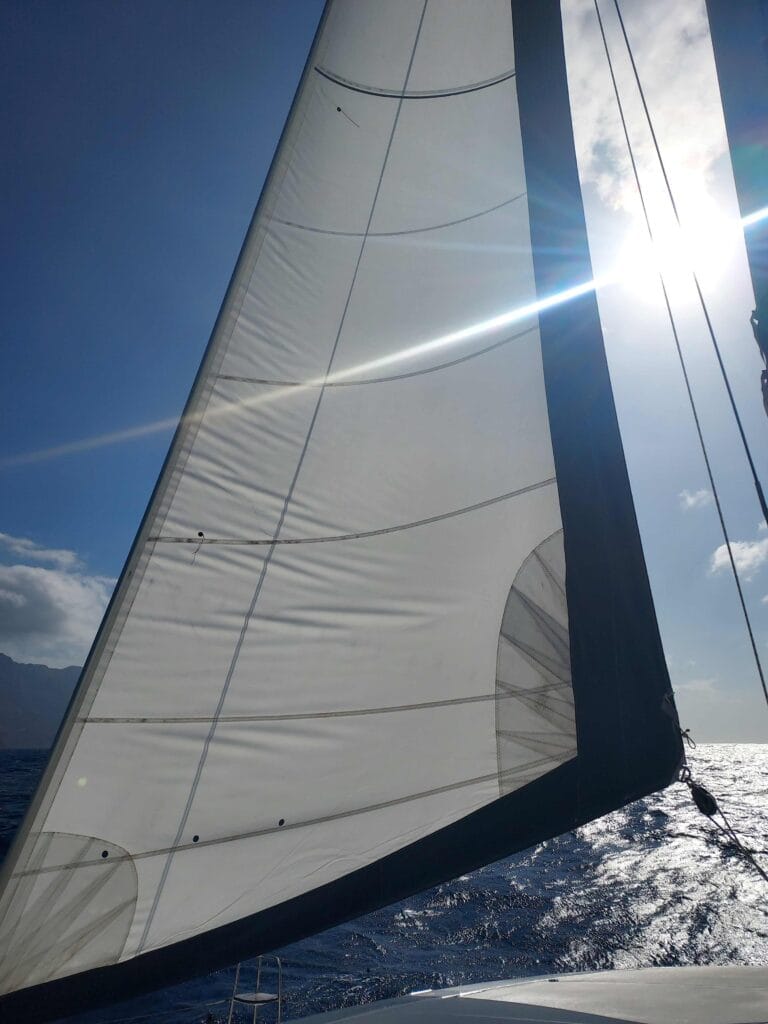
As we sailed, we noticed large ships appearing on the horizon. It turned out that there was a busy shipping lane here, used by large container ships taking an efficient route from Turkey to Sicily. Timing our crossing was crucial, as these massive vessels cannot slow down or swerve.
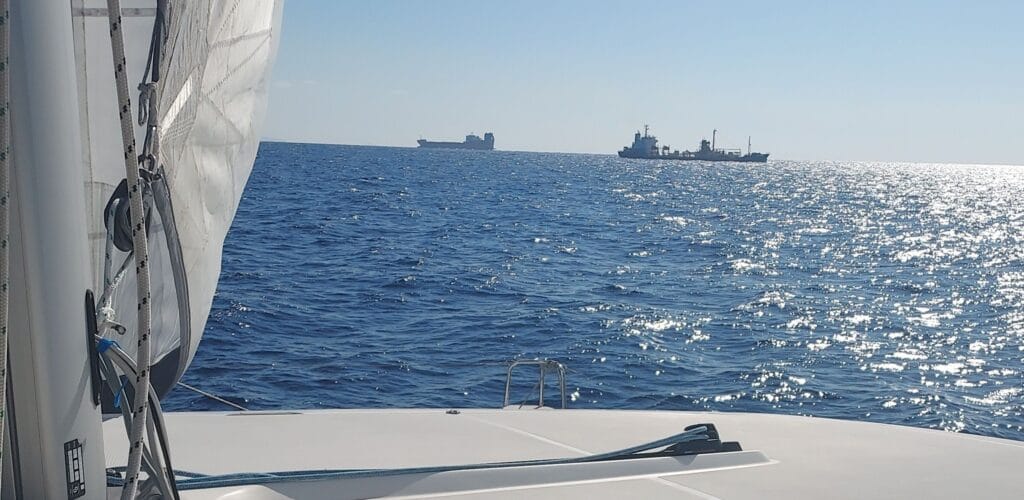
However, we didn’t have to worry about them being confined to the lane due to depth constraints—this area turned out to be incredibly deep! Depths varied up to 2 kilometers!
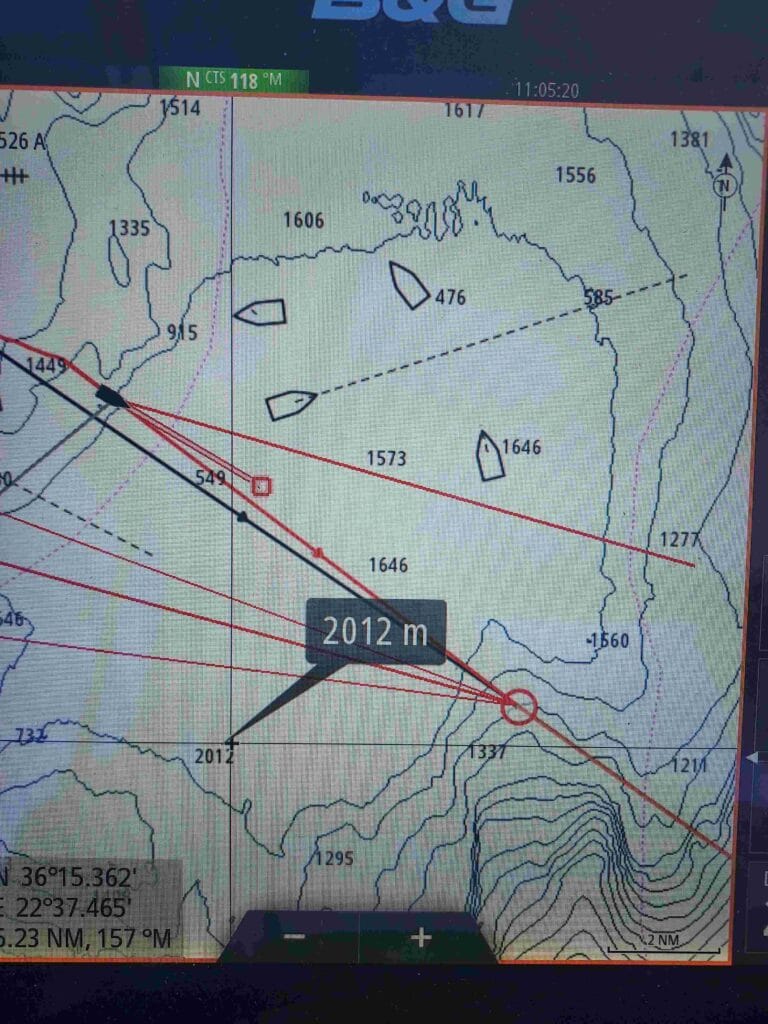
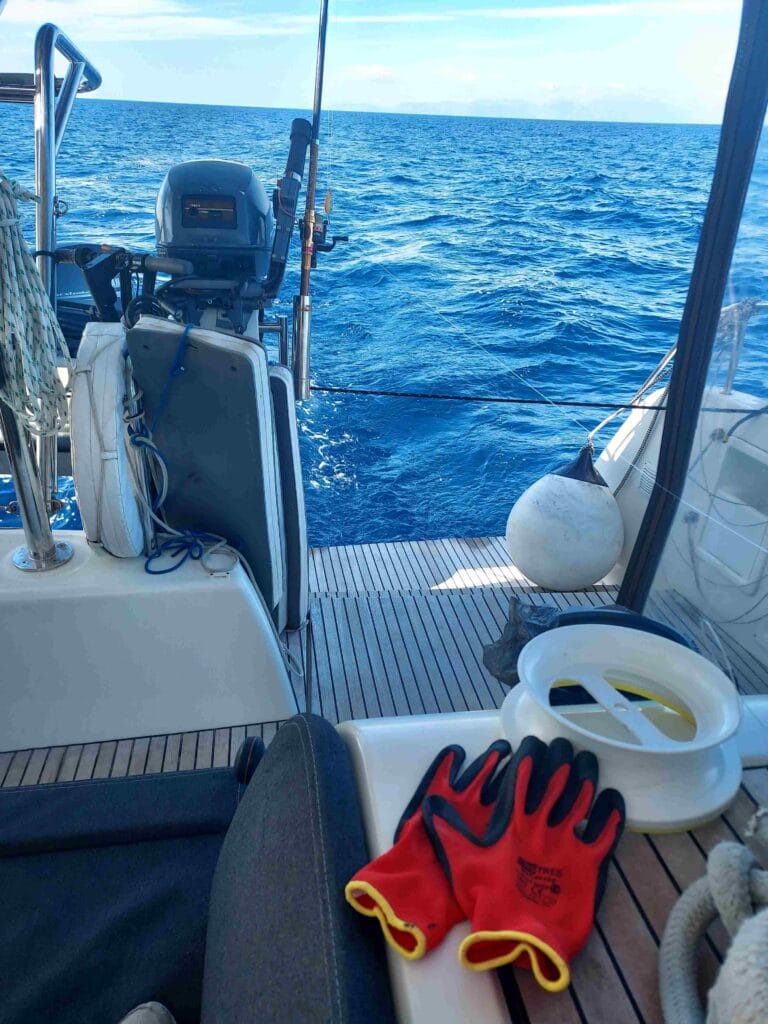
This encouraged Gilles to get out his fishing gear. This is tuna fishing season, and with these depths, the conditions were ideal. You need a long fishing line, and if you get a bite, it’s a real battle, as a tuna can weigh many kilos—gloves required! Hopeful, we checked the line regularly for hours, but unfortunately, we didn’t catch anything.
What we did ‘catch’ was the Meltemi wind. I knew that in this part of the Greek waters—the Aegean Sea—the northeastern wind could blow quite hard. This is especially true when sailing closer to Athens, near the Cyclades islands. The wind descends rapidly from the high Turkish mountains toward the sea, funneled into a narrow corridor, increasing its speed. It’s usually around force 5 or 6 on the Beaufort scale but can reach force 7 or 8.
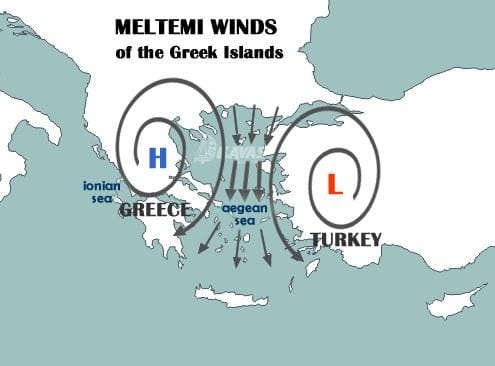
We had a force 5 wind, which was great because that ment 28-30 knots of wind and about 7 knots speed in sailing —a great pace, especially since it wasn’t a direct crosswind. However, we could see that the wind was going to persist and get even stronger. So, it was a relief to reach the sheltered bay at the foot of the island.
As we entered the bay, we expected to see more sailboats or at least some arrivals during the week. But that wasn’t the case—we were alone for the entire week! The crescent-shaped bay looked beautiful.
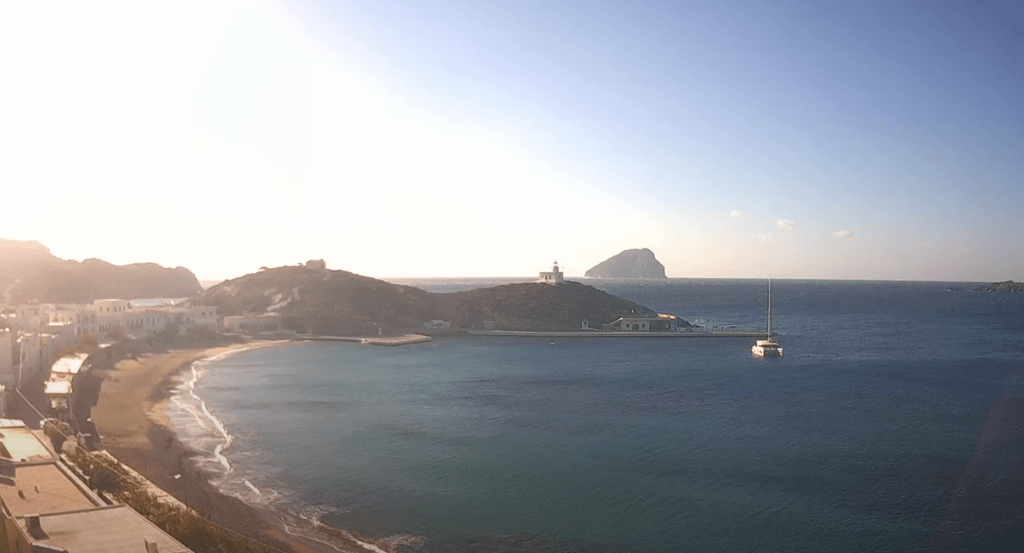
Kapsali
We found a nice spot at the quay, which made it easy to hop on and off the boat. We had a great view of the beach, where a few people sat now and then, despite the 20°C temperature. We’ve also noticed that in every place we visit during winter, there’s always at least one supermarket and one restaurant open—serving the occasional tourist but especially the locals who stay behind while most others head to the mainland.

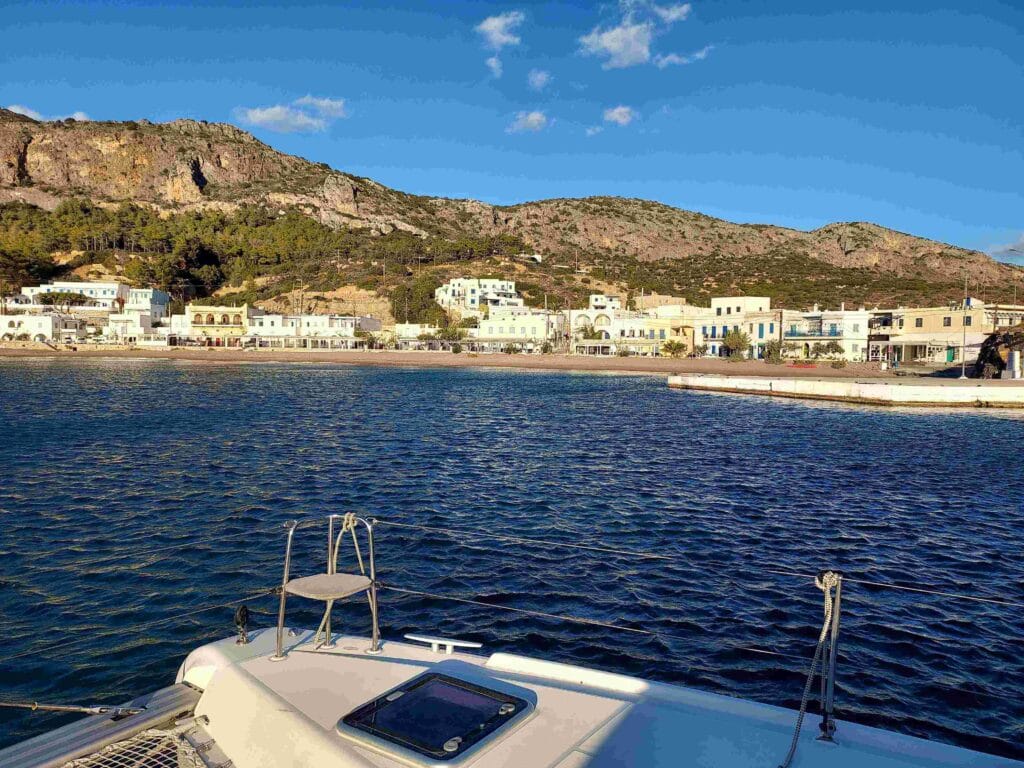
We filmed a video from a hill overlooking the bay, where you could feel the strong wind—though the bay’s shelter meant there were no waves.
We often strolled along the boulevard by the beach to do some shopping or visit a restaurant. It was nice to mix up cooking onboard with eating out.
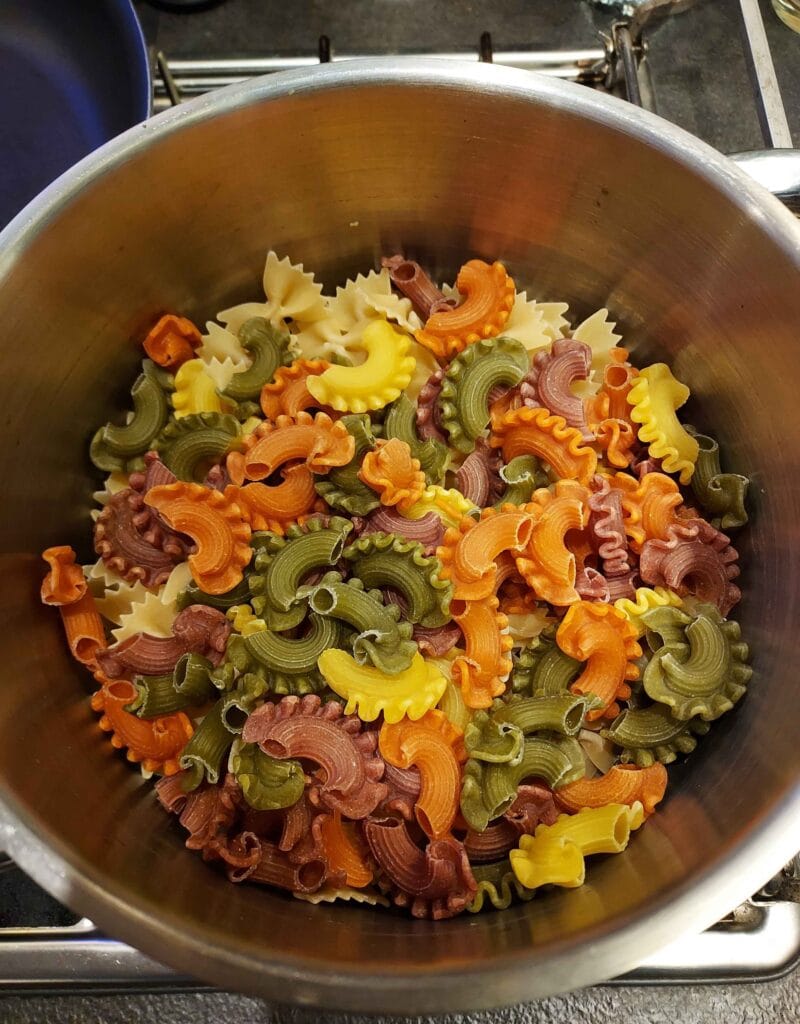
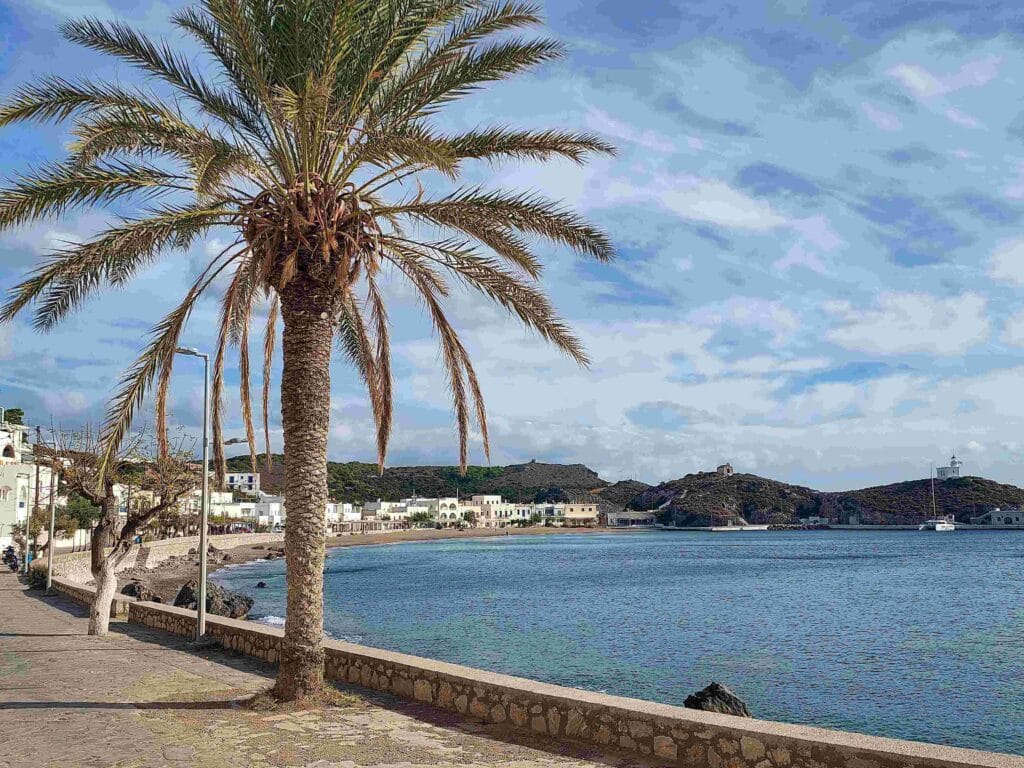
We went to the same restaurant twice, as it had delicious dishes and a very friendly owner. There were also outdoor seating areas, but we found it a bit too chilly—though they did offer beautiful sunsets on the western side of the island.
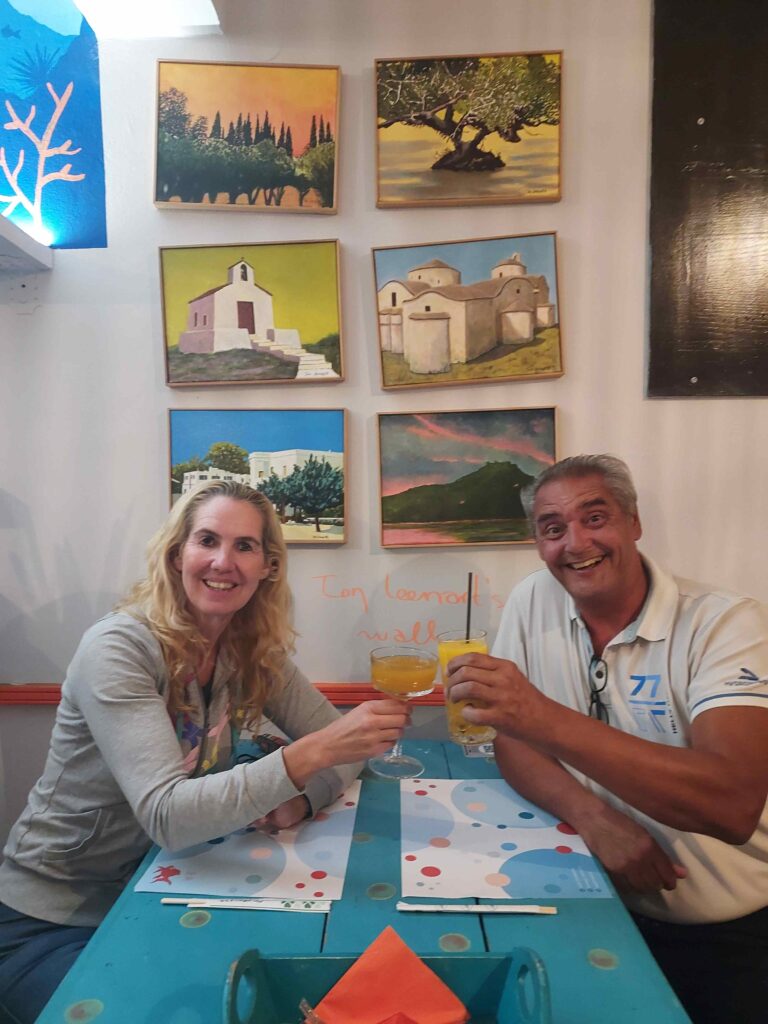
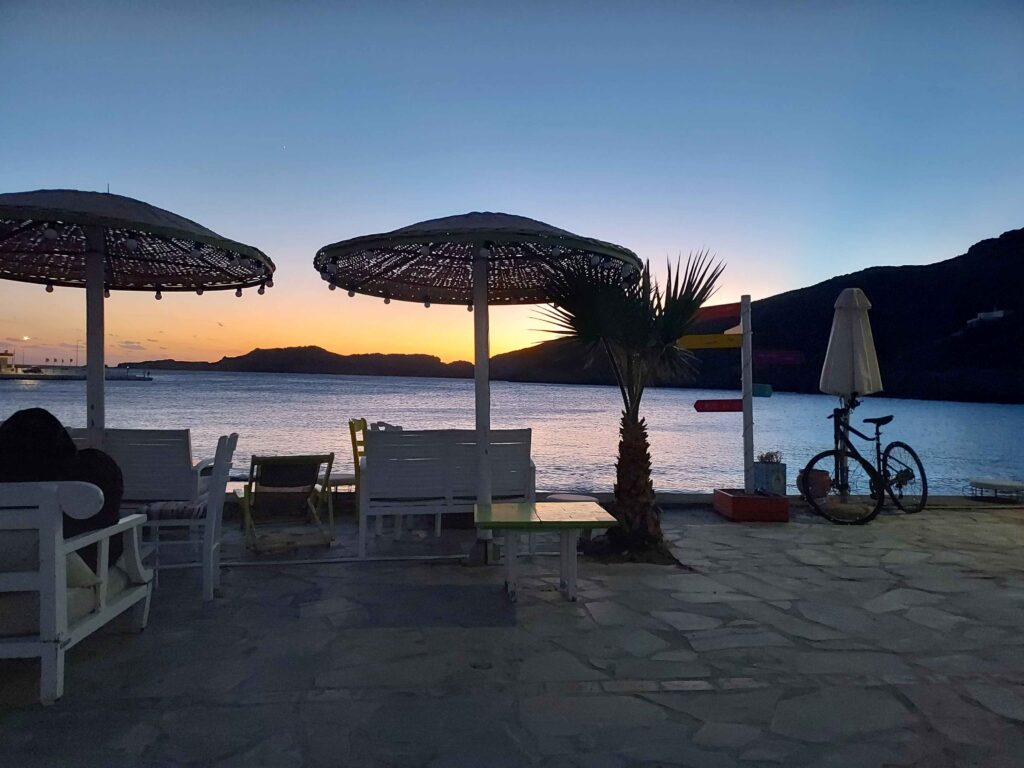
Chora
We loved the picturesque bay with its Greek Orthodox church! We also wanted to visit the island’s capital, as it’s known as a charming town with whitewashed houses and winding alleys.
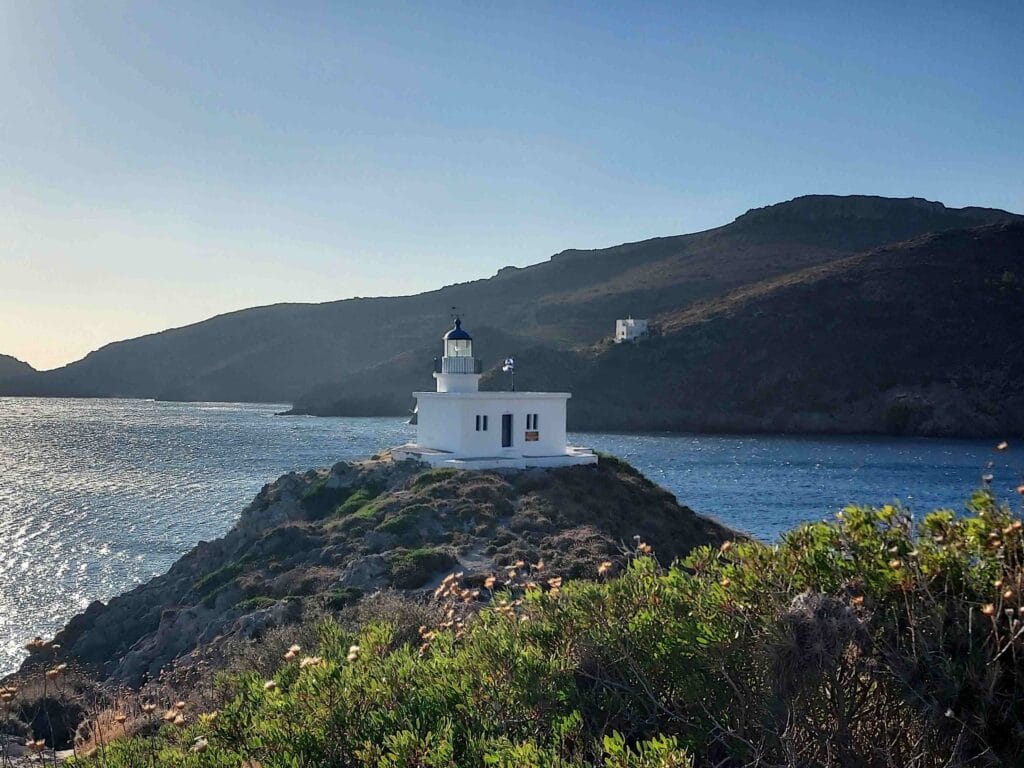
Here, we found the impressive Venetian castle towering high above the sea, offering breathtaking views of the bay where our boat was anchored.
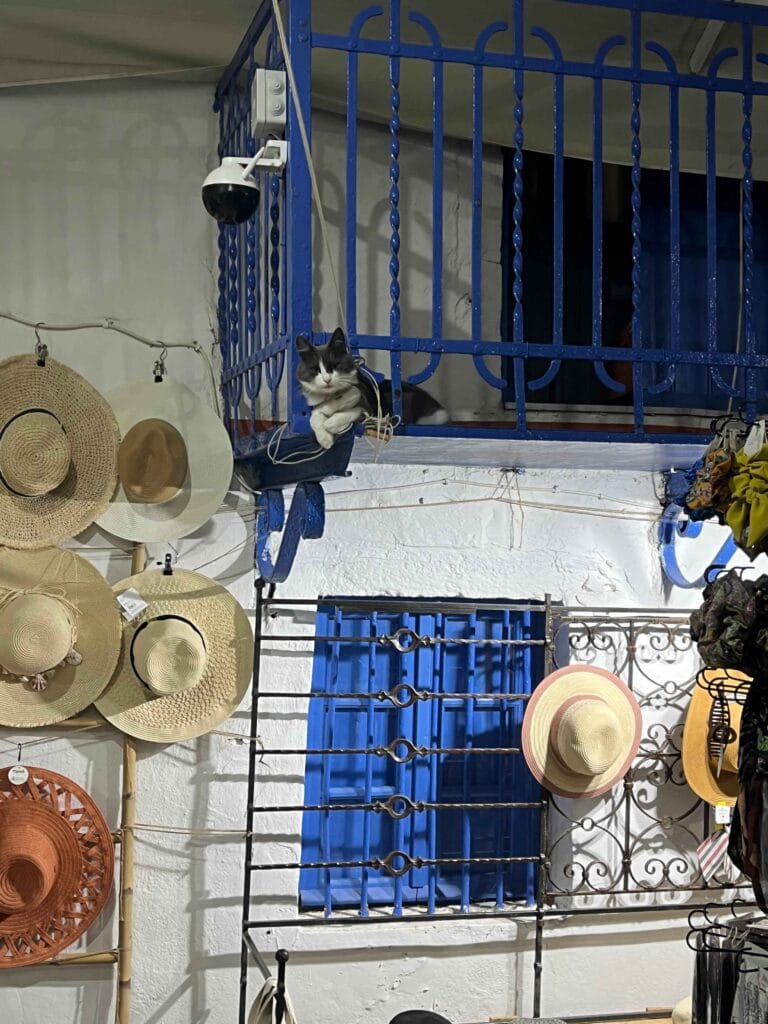
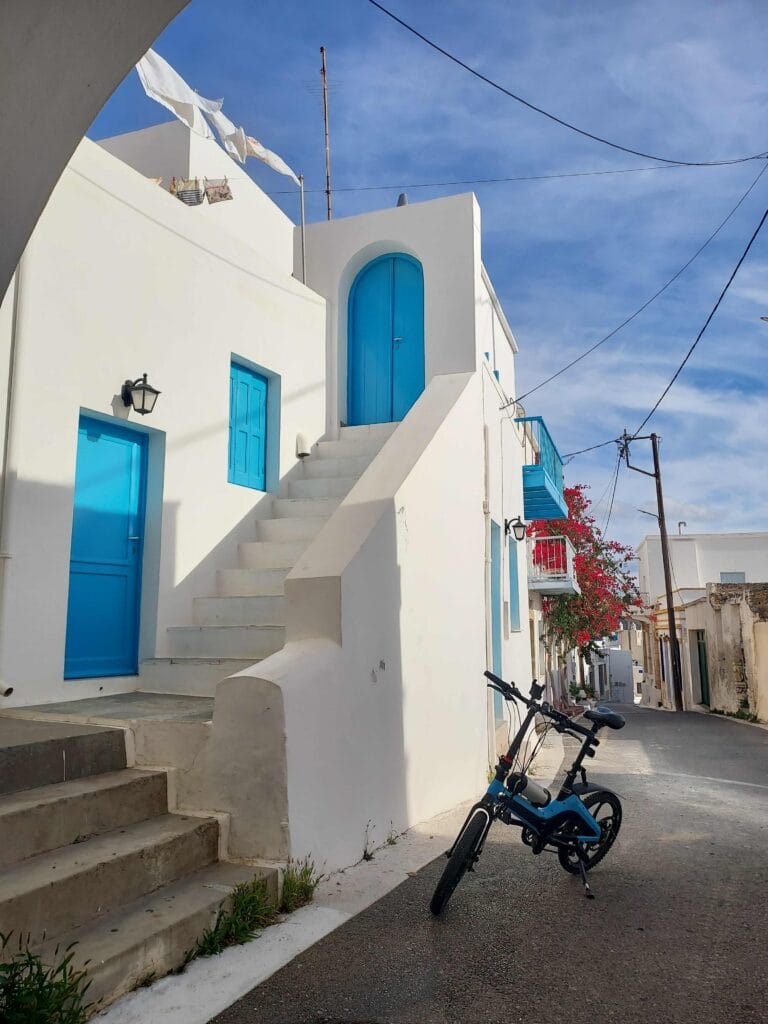

Greek Language = Impossible!
Chora had many small shops, and reading Greek remains a challenge. We spoke with a Greek shop owner who said, “Greek is like Chinese for Europeans.” And it’s true—you can hardly make sense of it. But we’re slowly getting better at deciphering it.
For example, we discovered how to translate these Greek letters into our Latin alphabet:
- Δ (Delta) → D
- Κ (Kappa) → K
- Λ (Lambda) → L
- Π (Pi) → P
- Ρ (Rho) → P (but pronounced as “R” in Greek!)
- Σ (Sigma) → S
- Φ (Phi) → F or Ph (sometimes written differently but recognizable)
- Χ (Chi) → Ch (it looks like “X” but sounds like the “ch” in “loch”)
Sometimes, understanding a word requires going back to its root meaning. For example, when we saw an English exit sign, I told Gilles, “You’d never guess the Greek word below means ‘exit! It has two O’s, a D, and an S—how could that be ‘exit?” But when you pronounce it phonetically as “exodos,” it suddenly makes sense—after all, “exodus” means to leave or depart!

With one last look at the most beautiful beach—because the advantage of the Meltemi wind is that it brings dry air and sunshine—we had a relaxing week. Now, onto the next step: sailing 40 miles to Crete!

